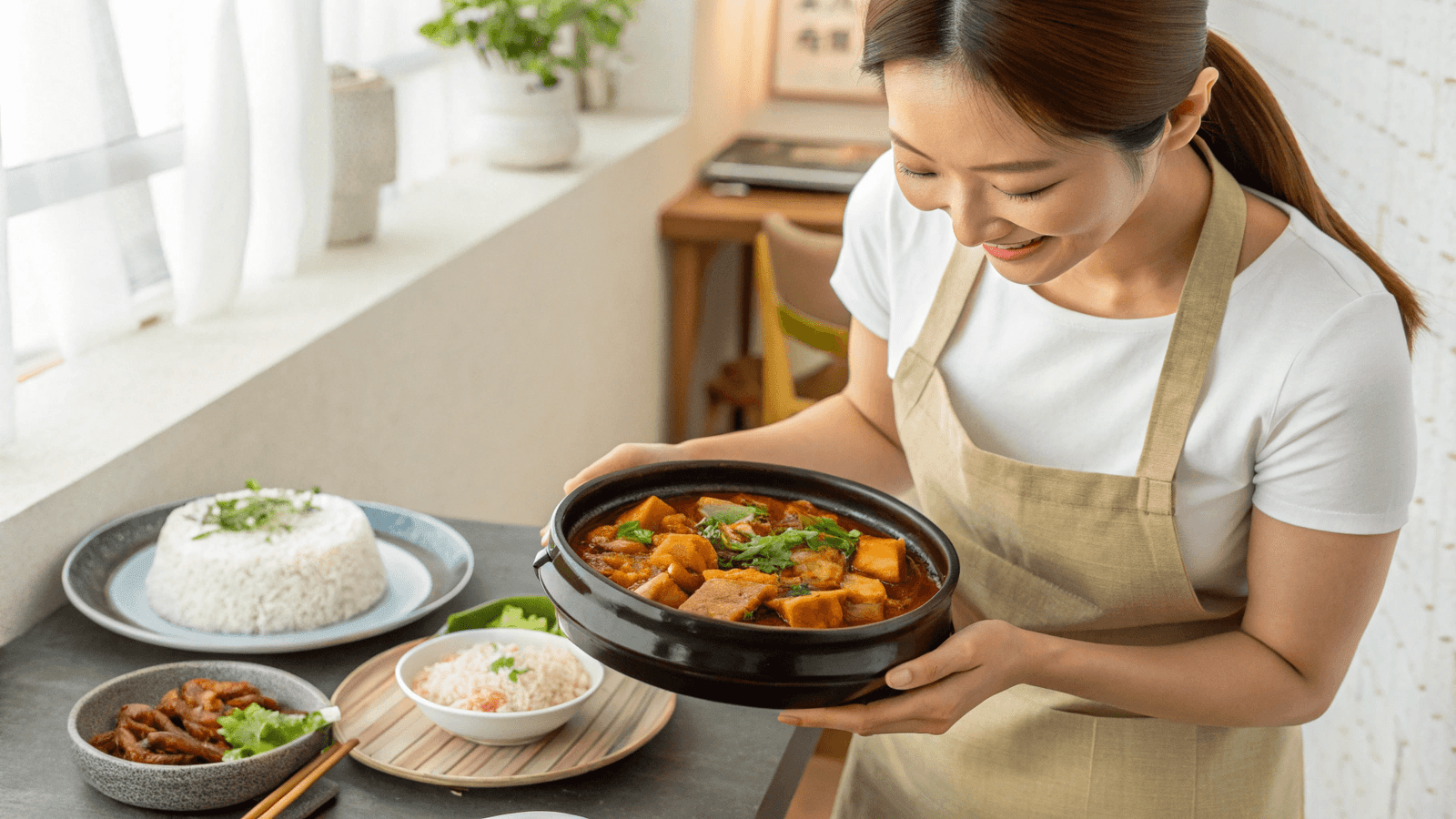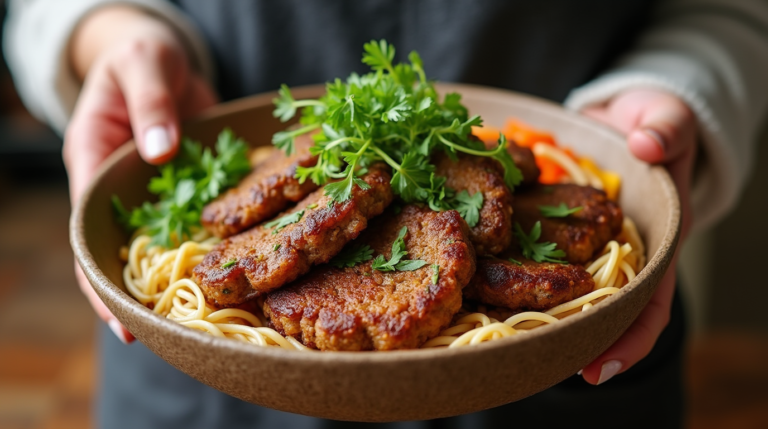10 Delicious Ways to Use Doenjang for Bold Korean Flavors
Doenjang for Bold Korean Flavors : Discover the umami-rich world of doenjang! This article explores 10 delicious ways to use this Korean fermented soybean paste.
Table of Contents
Introduction: Unveiling the Umami Power of Doenjang
Korean cuisine is renowned for its bold and complex flavors, and at the heart of many of these dishes lies a humble yet powerful ingredient: doenjang. Doenjang, Korean fermented soybean paste, is a staple in Korean kitchens, adding a depth of umami and savoriness that elevates every dish. It is not just an ingredient; it is an embodiment of Korean culinary heritage. This article will serve as your guide, unveiling the transformative power of Doenjang in 10 versatile and delicious ways. We’ll explore the history, flavor profiles, and diverse applications of this remarkable ingredient, so you can easily incorporate it into your own cooking, and bring authentic Korean flavors to your table.
Doenjang is made from soybeans, salt, and water. Soybeans are fermented, a process which can take months, or sometimes even years, resulting in a concentrated flavor profile that is complex and deeply savory. The fermentation process is key, transforming simple ingredients into a powerhouse of taste. In addition to its deliciousness, it has been a cornerstone of the Korean diet for centuries. Moreover, its nutritional benefits, including probiotics and high protein content, have solidified its role as a healthy food. It’s a symbol of Korean tradition, connecting generations through shared meals.
Therefore, if you are looking to explore Korean cooking, understanding and utilizing doenjang is a must. This article will serve as your gateway, helping you to experience the depth and nuance of Korean cuisine. So, let’s dive in and discover the versatility of Doenjang!
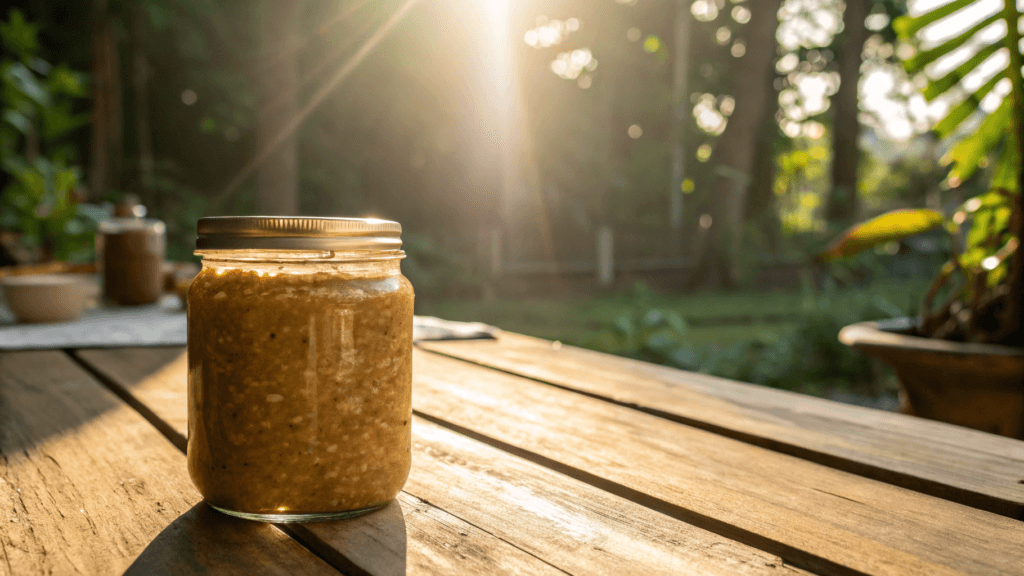
Understanding Doenjang: A Deep Dive into its Characteristics
To fully appreciate Doenjang, it is important to understand its characteristics. Its production methods, flavor, and texture contribute to its unique place in Korean cuisine.
Types of Doenjang: Exploring the Varieties
There are several types of Doenjang available, each with its own unique characteristics. While all Doenjang share the core ingredients, variations in production and additional ingredients lead to distinct flavor profiles.
- Traditional/Homemade Doenjang: This is the most authentic form of Doenjang. It is made using traditional methods and often undergoes a longer fermentation process, often several months, or even years. It’s typically characterized by a deeper, more complex flavor, with a pronounced umami and a slightly earthy undertone.
- Commercial Doenjang: This type is mass-produced for wider consumption. While the ingredients are similar, the fermentation period is usually shorter. Therefore, commercial versions often have a milder flavor profile than traditional Doenjang, and sometimes contain additives to enhance flavor or preserve its shelf life. Several brands offer different aging times, impacting the intensity of the flavor, and it often comes in textures ranging from coarse to smooth.
- Saeujeot Doenjang: Saeujeot is fermented salted shrimp, and it is sometimes added to Doenjang during the fermentation process. Consequently, this addition provides an even deeper umami taste and a slightly salty and seafoody undertone to the paste, adding another layer of complexity.
- Doenjang with Red Pepper Paste (Gochujang): Some variations of Doenjang are mixed with Gochujang, Korean red pepper paste. The addition of gochujang contributes a spicy kick and a bolder overall flavor profile, offering a fusion of savory, spicy, and umami notes.
Flavor Profile: Unraveling the Taste of Fermented Soybeans
Doenjang’s flavor profile is complex and multifaceted. When you taste Doenjang, you can detect several key flavor components:
- Salty: Salt is a crucial ingredient in Doenjang, and its presence contributes significantly to the overall flavor. The saltiness level can vary depending on the type and the amount of salt used during the fermentation.
- Savory/Umami: Doenjang is intensely savory and is a powerhouse of umami flavor. This is largely due to the fermentation process, which breaks down the soybeans and releases glutamates. These compounds are responsible for the rich, satisfying taste of umami. Think of parmesan cheese or miso; Doenjang has a similar profile.
- Earthy/Nutty: Beneath the saltiness and umami, there are earthy and nutty notes that provide a balanced flavor. These flavors add depth and complexity, making Doenjang a well-rounded ingredient.
- Fermented Notes: The fermentation process itself gives Doenjang its unique character. This process creates a depth of complexity that can be described as slightly funky, adding a special layer of umami to the flavor.
Texture & Storage: Keeping Your Doenjang Fresh
The texture of Doenjang can vary depending on the brand and the method of production. It can range from coarse to smooth, with some versions having visible soybean pieces. Doenjang should be stored properly to maintain its quality and prevent spoilage.
- Proper Storage: Doenjang should be stored in an airtight container. It should be kept in a cool, dark place away from direct sunlight. If stored properly, it can last for several months.
- Refrigeration: Refrigeration is recommended, especially for longer storage. In the fridge, Doenjang can last for a year or more. However, this may slow down the aging process, which can further develop its flavor.
- Room Temperature: If you plan to use Doenjang frequently, storing it at room temperature is acceptable. However, keep it away from heat sources, and make sure the container is well-sealed.
The Building Block: Doenjang Jjigae – The Cornerstone of Korean Flavor
Doenjang Jjigae (된장찌개), or Korean fermented soybean paste stew, is a culinary classic, a cornerstone of Korean cuisine, and the quintessential dish to showcase Doenjang’s flavor. This stew exemplifies the use of Doenjang and provides a simple yet delicious example of how this ingredient can be transformed into something special.
The Essence of Doenjang Jjigae: A Beloved Korean Staple
Doenjang Jjigae is a staple in almost every Korean household. Its versatility allows for endless variations, but the core ingredients and preparation method remain consistent. The savory broth and hearty ingredients create a comforting and flavorful meal. It is, in essence, comfort food at its best. It is often served alongside a bowl of steamed rice and an array of side dishes (banchan), completing a balanced and satisfying meal.
Classic Recipe Overview: Simplicity and Flavor in Every Bowl
A classic Doenjang Jjigae recipe uses simple, yet effective, ingredients to showcase the umami and rich flavor of the Doenjang.
- Broth: The broth is the base of the stew, providing the foundation of the flavors. Most recipes utilize anchovy broth (myeolchi-yuksu), or kelp broth (dashima-yuksu). Anchovy broth is made by simmering dried anchovies in water, creating a savory, slightly salty broth. Kelp broth, on the other hand, involves simmering dried kelp in water for a milder, more subtle flavor. Both provide a great base for the Doenjang.
- Doenjang: Doenjang, of course, is the star of the show. The amount of Doenjang used will directly impact the intensity of the flavor. Typically, a few tablespoons are added, adjusted to taste.
- Vegetables: A variety of vegetables are often added for texture, flavor, and nutrients. Common choices include zucchini, onions, tofu, scallions, potatoes, and mushrooms. Each vegetable contributes a unique flavor profile and balances the saltiness of the Doenjang. For instance, zucchini and potatoes provide a soft texture, onions add sweetness, and scallions offer a fresh, pungent taste.
- Protein: Tofu is a very popular choice. Seafood, like clams or shrimp, or even small pieces of beef, can also be used, providing additional layers of flavor.
- Seasonings: Other seasonings often included are garlic and gochugaru (Korean chili powder). Green chili peppers can be added for some heat.
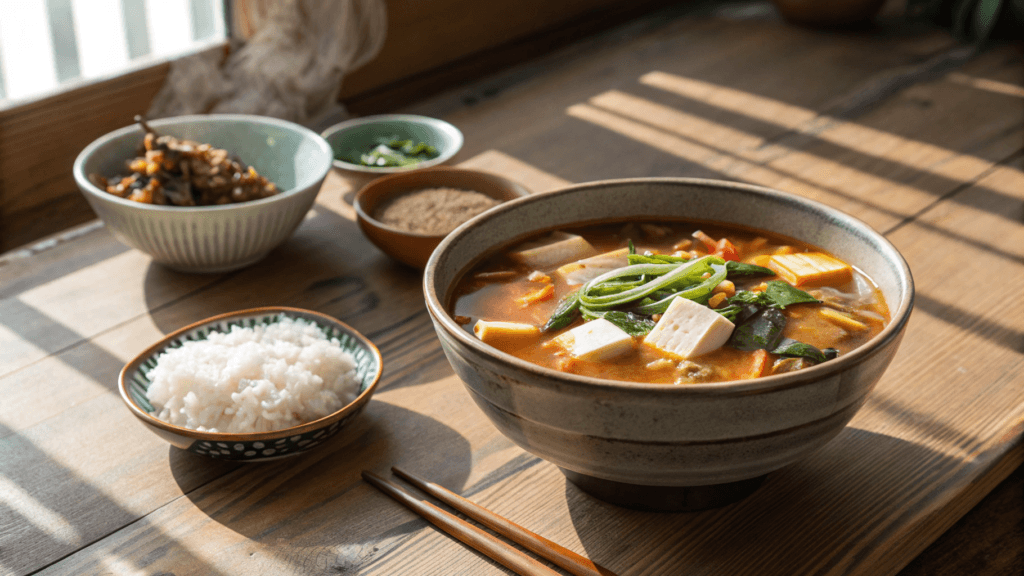
Step-by-Step Instructions: Creating Your Own Doenjang Jjigae
Here is a simplified guide for making a simple Doenjang Jjigae:
- Prepare the Broth: Prepare your broth. For anchovy broth, simmer dried anchovies in water for about 15 minutes. For kelp broth, simmer dried kelp for about 20 minutes. Strain the broth to remove the solids.
- Sauté Aromatics: Sauté some minced garlic and chopped onions in a pot with a little bit of oil. This helps to release their flavor.
- Add Vegetables: Add your chosen vegetables (such as zucchini, potatoes, or mushrooms) to the pot and sauté them briefly.
- Add Broth and Doenjang: Pour in your broth. Add Doenjang and whisk until it is dissolved.
- Simmer: Bring the stew to a boil, then reduce the heat to a simmer. Let it simmer for about 15-20 minutes. This helps the flavors to meld together.
- Add Protein and Season: Add tofu or your chosen protein during the last few minutes of simmering. Season with gochugaru or green chili peppers if you prefer.
- Garnish and Serve: Garnish with chopped scallions. Serve hot, ideally with a bowl of rice and various side dishes (banchan).
Variations: Experimenting with Doenjang Jjigae
There are many variations of Doenjang Jjigae that can be adapted to your personal preferences. For instance, adding kimchi can introduce a spicy and fermented element. Adding meat such as beef can also add a different dimension of flavor to the dish.
Serving Suggestions: The Korean Dining Experience
Doenjang Jjigae is a perfect example of the Korean dining experience. It is traditionally served with a bowl of steamed white rice and a selection of side dishes (banchan). The combination of rice, stew, and banchan creates a balanced and complete meal that offers a wide range of flavors and textures.
Marinades & Glazes: Infusing Meats and Seafood with Doenjang
Doenjang’s unique flavor profile and umami richness make it an excellent marinade and glaze ingredient for both meats and seafood. Its ability to tenderize certain proteins while imparting complex flavors is truly exceptional.
The Power of Doenjang in Marinades: Tenderizing and Flavoring
Doenjang marinades are used to enhance the taste of meats and seafood, but also can help tenderize tougher cuts. This is because of the enzymes in Doenjang that will help to break down the fibers in the protein. The saltiness and umami of Doenjang provide a delicious base, while other ingredients are added to build complexity. The longer the marinating time, the deeper the flavor will penetrate.
Recipe 1: Doenjang-Marinated Pork/Beef: A Delicious Combination
Here is a simple recipe for Doenjang-Marinated Pork or Beef:
- Ingredients:
- 1 pound of pork or beef (thinly sliced is recommended)
- 2-3 tablespoons of Doenjang
- 1 tablespoon of soy sauce
- 2 cloves of minced garlic
- 1 teaspoon of grated ginger
- 1 tablespoon of sesame oil
- 1 teaspoon of sugar or honey (optional, for caramelization)
- Instructions:
- Mix the Marinade: In a bowl, combine the Doenjang, soy sauce, garlic, ginger, sesame oil, and sugar/honey. Mix them well until a consistent paste is formed.
- Marinate the Meat: Add the meat to the marinade and thoroughly coat it. Ideally, marinate the meat for at least 30 minutes, or even better, for several hours or overnight in the refrigerator.
- Cook the Meat: The meat can be cooked using various methods:
- Grilling: Grill over medium-high heat, flipping occasionally, until cooked through and slightly charred.
- Pan-Frying: Pan-fry in a skillet over medium-high heat until cooked through.
- Baking: Bake in the oven at 375°F (190°C) for about 15-20 minutes, or until cooked through.
- Serve: Serve the Doenjang-marinated meat with rice, lettuce wraps, and ssamjang (Korean dipping sauce), and other side dishes.
Recipe 2: Doenjang-Glazed Salmon/Fish: A Flavorful Coating
Here is a recipe for a Doenjang-Glazed Salmon or Fish:
- Ingredients:
- 1 pound of salmon or other fish fillets
- 2-3 tablespoons of Doenjang
- 2 tablespoons of honey or maple syrup (for sweetness and glaze consistency)
- 1 tablespoon of gochujang (optional, for heat)
- 1 tablespoon of rice vinegar
- 1 clove of minced garlic
- 1 teaspoon of grated ginger
- Instructions:
- Prepare the Glaze: In a bowl, combine the Doenjang, honey or maple syrup, gochujang (if using), rice vinegar, garlic, and ginger. Whisk them together until smooth.
- Glaze the Fish: Place the fish fillets on a baking sheet lined with parchment paper. Brush the glaze generously over the fillets.
- Cook the Fish:
- Broiling: Broil the fish for 5-7 minutes, or until the glaze is caramelized and the fish is cooked through. Keep a close eye on it to prevent burning.
- Baking: Bake in the oven at 400°F (200°C) for about 12-15 minutes, or until cooked through and glazed.
- Pan-Frying: Pan-fry the fish over medium heat, flipping it carefully to ensure even cooking.
- Serve: Serve the Doenjang-glazed fish with steamed rice, vegetables, and seaweed.
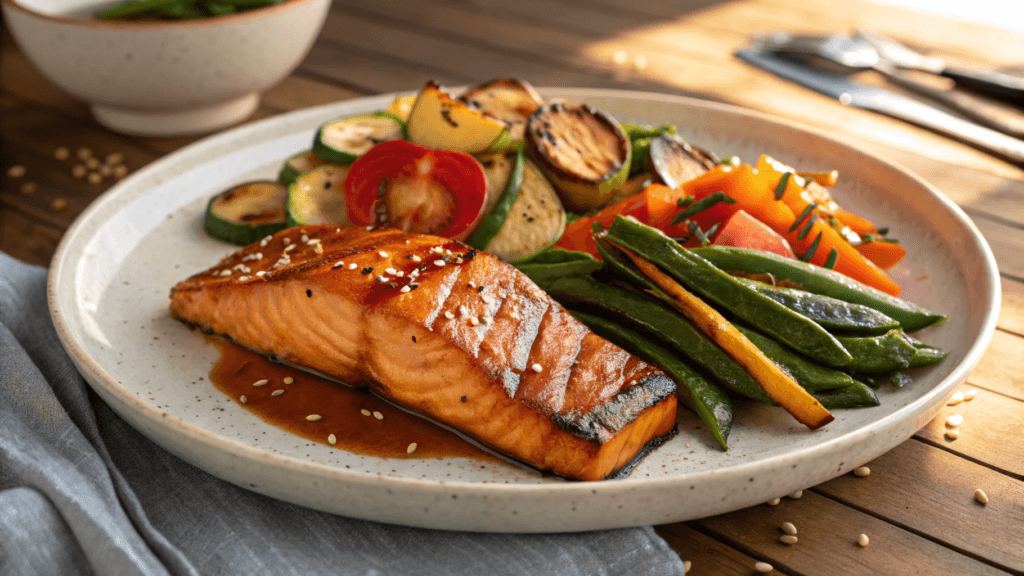
Flavoring Sauces and Dressings: Elevating Everyday Dishes
Doenjang is an excellent base for sauces and dressings, providing a quick way to transform ordinary dishes. The combination of Doenjang’s umami with other seasonings will add depth and complexity.
Versatility of Doenjang in Sauces: Adding Depth and Complexity
The versatility of Doenjang extends beyond marinades and stews. It can also be used to transform simple sauces and dressings, adding depth and complexity with just a few ingredients. The saltiness of Doenjang adds a unique base flavor, while the umami notes enhance the overall taste.
Recipe 1: Doenjang Vinaigrette: A Flavorful Salad Dressing
Here is a recipe for a simple Doenjang Vinaigrette:
- Ingredients:
- 2 tablespoons of Doenjang
- 2 tablespoons of rice vinegar
- 1 tablespoon of sesame oil
- 1 teaspoon of soy sauce (optional, for extra saltiness)
- 1 teaspoon of honey or maple syrup (for balancing the flavors)
- 1 clove of minced garlic
- 1/2 teaspoon of grated ginger
- Instructions:
- Whisk the Ingredients: In a small bowl, whisk all the ingredients together until the Doenjang is well-incorporated and the dressing is smooth. Adjust the sweetness and acidity to your preference.
- Serve: Use this vinaigrette on salads, especially those with leafy greens, grilled vegetables, or grilled tofu.
Recipe 2: Doenjang Dipping Sauce: A Great Dip for Many Dishes
Here is a recipe for a simple Doenjang dipping sauce:
- Ingredients:
- 3 tablespoons of Doenjang
- 1 tablespoon of gochujang (optional)
- 1 tablespoon of sesame oil
- 1 tablespoon of rice vinegar
- 1 teaspoon of sugar or honey
- 1 clove of minced garlic
- 1 tablespoon of chopped scallions
- Instructions:
- Mix the Sauce: In a small bowl, mix all the ingredients together. Adjust the sweetness and acidity according to taste.
- Serve: Serve this dipping sauce for vegetables, dumplings (mandu), or grilled meats.
Enhancing Vegetables: Doenjang as a Vegetable Companion
Doenjang is excellent for enhancing vegetables, adding savory depth and complementing their natural flavors. The unique taste profile of Doenjang pairs wonderfully with a range of vegetables, making them more exciting and flavorful.
Doenjang’s Compatibility with Vegetables: A Delightful Combination
Doenjang’s ability to complement vegetables is a significant asset. The umami richness of the Doenjang can enhance the natural flavors of vegetables, bringing a new depth of flavor. Therefore, adding Doenjang turns simple vegetables into delicious and fulfilling dishes.
Recipe 1: Doenjang-Glazed Eggplant: A Savory Dish
Here is a recipe for Doenjang-Glazed Eggplant:
- Ingredients:
- 1 large eggplant, cut into 1-inch thick slices
- 2 tablespoons of Doenjang
- 1 tablespoon of soy sauce
- 1 tablespoon of sesame oil
- 1 teaspoon of honey or maple syrup
- 1 clove of minced garlic
- 1 tablespoon of chopped green onions
- Instructions:
- Prepare the Eggplant: If desired, you can salt the eggplant slices for about 30 minutes to remove excess moisture.
- Make the Glaze: In a small bowl, mix the Doenjang, soy sauce, sesame oil, honey or maple syrup, and minced garlic.
- Cook the Eggplant:
- Grilling: Grill the eggplant slices over medium heat, brushing them with the Doenjang glaze, until they are tender and nicely browned.
- Pan-Frying: Pan-fry the eggplant in a skillet over medium heat, brushing with the glaze, until it is tender and the glaze has caramelized.
- Baking: Bake the eggplant at 375°F (190°C), brushed with the glaze, until it is tender and the glaze is caramelized.
- Serve: Garnish with chopped green onions and serve as a side dish or over rice.
Recipe 2: Blanched Spinach with Doenjang: A Simple Korean Side Dish
Here is a recipe for Blanched Spinach with Doenjang:
- Ingredients:
- 1 pound of spinach, washed
- 2 tablespoons of Doenjang
- 1 tablespoon of sesame oil
- 1 clove of minced garlic
- 1 teaspoon of sesame seeds
- Instructions:
- Blanch the Spinach: Bring a pot of water to a boil. Add the spinach and blanch for about 30 seconds, until it wilts. Immediately transfer the spinach to a bowl of ice water to stop the cooking process. Drain the spinach well.
- Mix Ingredients: In a bowl, combine the drained spinach with the Doenjang, sesame oil, minced garlic, and sesame seeds. Mix well.
- Serve: Serve as a Korean side dish (banchan).
Doenjang in Soups & Broths: Beyond Jjigae
While Doenjang Jjigae is the most famous Doenjang-based soup, this ingredient can be used to enhance a variety of soups and broths, providing a depth of flavor that elevates these dishes.
Expanding Doenjang’s Soup Applications: Umami in Every Sip
Doenjang’s ability to add umami and savory flavors makes it a versatile addition to different types of soups and broths. It can be used to enrich the flavor of simple broths, add complexity to noodle soups, and provide a distinctive base for other soup creations.
Recipe 1: Doenjang-Based Noodle Soup: A Hearty and Flavorful Meal
Here is a recipe for a Doenjang-Based Noodle Soup:
- Ingredients:
- 4 cups of anchovy broth
- 2-3 tablespoons of Doenjang
- 8 ounces of noodles (udon, ramen, or somyeon)
- 1 cup of vegetables (onions, zucchini)
- Protein (such as pork or tofu), cooked and sliced
- Chopped scallions, for garnish
- Instructions:
- Prepare the Broth: Prepare the broth using dried anchovies or kelp, or simply use store-bought broth.
- Add Doenjang: In a pot, bring the broth to a simmer. Add the Doenjang and whisk until it is completely dissolved.
- Cook Vegetables: Add vegetables, and cook until they are tender.
- Cook the Noodles: Cook the noodles according to package instructions.
- Combine and Serve: Add the cooked noodles to the soup. Add the cooked protein, garnish with chopped scallions, and serve.
Recipe 2: Simple Doenjang Broth for Steamed Dishes or Soups
Here is a recipe for a simple Doenjang Broth that can be used for steamed dishes or as a base for other soups:
- Ingredients:
- 4 cups of water or broth (anchovy or kelp)
- 2 tablespoons of Doenjang
- 1 clove of minced garlic
- 1/2 teaspoon of grated ginger
- Instructions:
- Simmer the Broth: In a pot, bring the water or broth to a simmer.
- Add Doenjang and Aromatics: Add the Doenjang, minced garlic, and grated ginger. Whisk until the Doenjang is dissolved.
- Strain (Optional): For a clearer broth, strain it to remove the solids.
- Use: This broth can be used for steaming dishes, or as the base for other soups or stews.
Fusion Dishes: Experimenting with Doenjang in Modern Cuisine
Doenjang’s unique flavor profile is incredibly adaptable. As such, it can be creatively incorporated into fusion dishes, bringing a touch of Korean culinary heritage to modern cuisine.
Doenjang’s Adaptability in Fusion Cuisine: Blending Flavors
Doenjang’s versatility makes it suitable for fusion dishes. Its complex umami flavor can seamlessly blend with other cuisines and provide an exciting twist to familiar recipes.
Recipe 1: Doenjang Carbonara: A Korean Twist
Here is a recipe for Doenjang Carbonara:
- Ingredients:
- 8 ounces of pasta (spaghetti or linguine are good choices)
- 4 ounces of chopped ingredients
- 2 large eggs
- 1/2 cup of grated Parmesan cheese
- 1-2 tablespoons of Doenjang
- Black pepper, to taste
- Instructions:
- Cook the Pasta: Cook the pasta according to package instructions.
- Cook the Ingredients: Cook the ingredients (pork or pancetta) in a skillet until the ingredients are cooked and slightly crispy. Remove from heat.
- Make the Carbonara Sauce: In a bowl, whisk the eggs, Parmesan cheese, and Doenjang together.
- Combine: Add the drained pasta to the skillet with the cooked pork or pancetta. Pour the egg mixture over the pasta, and quickly toss to coat. The residual heat from the pasta will cook the eggs. If the sauce is too thick, add a little pasta water. Season with black pepper.
- Serve: Serve immediately, with extra Parmesan cheese if desired.
Recipe 2: Doenjang-Infused Mac and Cheese: A Comfort Food Delight
Here is a recipe for a Doenjang-Infused Mac and Cheese:
- Ingredients:
- 8 ounces of macaroni
- 2 tablespoons of butter
- 2 tablespoons of flour
- 2 cups of milk
- 2 cups of shredded cheese (cheddar, Gruyere)
- 2 tablespoons of Doenjang
- Breadcrumbs, for topping (optional)
- Instructions:
- Cook the Macaroni: Cook the macaroni according to package instructions. Drain the macaroni and set aside.
- Make the Cheese Sauce: In a saucepan, melt the butter. Whisk in the flour and cook for 1-2 minutes. Gradually whisk in the milk until the sauce is smooth. Bring the sauce to a simmer, then reduce the heat. Add the shredded cheese and Doenjang, stirring until the cheese has melted and the sauce is smooth.
- Combine and Bake (Optional): Add the cooked macaroni to the cheese sauce and stir to combine. Transfer to a baking dish. Sprinkle with breadcrumbs, if desired. Bake at 350°F (175°C) for 15-20 minutes, or until the breadcrumbs are golden and the mac and cheese is bubbly.
- Serve: Serve hot.
Pairing Recommendations: Complementing Doenjang’s Flavor Profile
Pairing is important to enjoy and balance the bold flavors of Doenjang. The right beverages and side dishes can enhance the taste.
Beverages: Quenching the Thirst
Certain beverages can enhance the Doenjang experience.
- Soju: Soju, a Korean distilled spirit, pairs very well with Doenjang Jjigae. Its clean and crisp taste helps to cut through the richness of the stew.
- Makgeolli: Makgeolli, a traditional Korean rice wine, offers a slightly sweet and tangy flavor profile, which creates a good balance against Doenjang.
- Beer: Light, crisp beers can also complement Doenjang dishes, providing refreshment.
- Non-alcoholic options: Unsweetened tea or water will also help to cleanse the palate.
Side Dishes: The Art of Banchan
The Korean dining experience is characterized by a variety of side dishes (banchan), which complement Doenjang dishes.
- Kimchi: Kimchi is a natural companion to most Doenjang dishes. The spicy and fermented flavors of kimchi provide a great contrast to the umami richness of the Doenjang.
- Other Banchan: Other side dishes can include seasoned spinach, stir-fried vegetables, and pickled radishes. These offer a variety of flavors and textures that enhance the overall meal.
Flavor Balancing: Achieving Harmony
Balancing the saltiness of Doenjang is critical. The addition of other ingredients can help balance the flavors. This can be achieved with the addition of sweet ingredients such as honey or maple syrup or sour ingredients such as rice vinegar.
Conclusion: Embracing the Bold Flavors of Doenjang
Doenjang is an exceptionally versatile and delicious ingredient. From classic Doenjang Jjigae to modern fusion creations, it’s a testament to Korean culinary heritage.
Whether you are a seasoned cook or a beginner, this article has offered a comprehensive exploration of the different ways to use Doenjang. We have explored its characteristics, learned how to make a Doenjang Jjigae, considered its use in marinades and glazes, and discussed its role in sauces, dressings, and more.
So, get creative, experiment, and discover the bold flavors of Doenjang! Incorporate it into your cooking and experience the umami magic that this fermented soybean paste has to offer.
Cooking is an act of love and creativity! 🌟 What do you think of this recipe? I’d love to hear your thoughts and any tips or tweaks you’d suggest to make it even better. Let’s inspire each other in the kitchen!
There are no reviews yet. Be the first one to write one.


